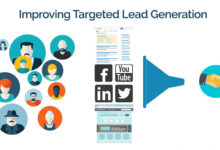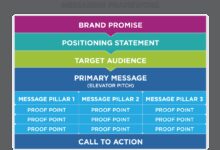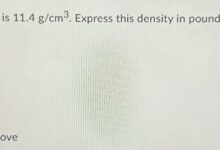Leads Density: 7 Powerful Insights to Skyrocket Your Conversion Rates
Ever wondered why some marketing campaigns convert like crazy while others flop? The secret might not be in the content alone—but in something called leads density. It’s the hidden metric that separates average from exceptional.
What Is Leads Density and Why It Matters

Leads density is a crucial yet often overlooked metric in digital marketing and sales analytics. It refers to the concentration or volume of qualified leads generated within a specific context—be it a campaign, time frame, geographic region, or digital channel. Unlike raw lead counts, leads density measures quality and efficiency, helping businesses understand not just how many leads they’re getting, but how impactful those leads are.
Defining Leads Density in Modern Marketing
Leads density isn’t just about numbers—it’s about relevance. It’s calculated by assessing the number of high-intent, qualified leads per unit of effort, cost, or exposure. For example, if two campaigns generate 1,000 leads each, but one comes from a highly targeted LinkedIn ad and the other from a broad Facebook campaign with low engagement, the former likely has higher leads density.
- Leads density = Qualified leads / Total exposure or cost
- It emphasizes quality over quantity
- Used to benchmark campaign effectiveness across channels
This concept is especially vital in B2B marketing, where a single high-value lead can be worth more than hundreds of unqualified ones. According to HubSpot’s 2023 marketing report, companies focusing on lead quality see up to 3x higher conversion rates.
How Leads Density Differs From Lead Volume
Many marketers confuse leads density with lead volume. While volume measures the total number of leads, density evaluates their concentration and relevance. Think of it like water: volume tells you how much water you have; density tells you whether it’s pure or diluted.
“High lead volume with low density is like fishing in a polluted pond—you catch a lot, but most aren’t worth keeping.”
For instance, a webinar might attract 500 registrants (high volume), but if only 50 engage meaningfully and fit your buyer persona, the leads density is just 10%. Optimizing for density means improving targeting, messaging, and qualification criteria to increase that percentage.
The Science Behind Leads Density: Metrics That Matter
Understanding leads density requires diving into specific metrics that reveal the health of your lead generation engine. These aren’t vanity metrics—they’re diagnostic tools that show where your strategy is working and where it’s leaking value.
Conversion Rate as a Proxy for Density
One of the most direct indicators of leads density is conversion rate—the percentage of leads that turn into opportunities or customers. A high conversion rate often signals high leads density because it means your leads are already aligned with your offering.
- If 20% of leads from a niche industry event convert, that’s strong density
- If only 2% from a mass email blast convert, density is low
- Tracking conversion by source helps identify high-density channels
Tools like Salesforce CRM allow marketers to segment leads by source and track conversion paths, making it easier to calculate and compare density across campaigns.
Cost Per Qualified Lead (CPQL)
CPQL is another critical metric tied to leads density. It’s calculated by dividing the total campaign cost by the number of qualified leads generated. A lower CPQL usually indicates higher density because you’re spending less to acquire valuable prospects.
For example:
- Campaign A: $5,000 spent, 50 qualified leads → CPQL = $100
- Campaign B: $5,000 spent, 10 qualified leads → CPQL = $500
Even if both campaigns generate the same total leads, Campaign A has higher leads density due to better targeting and filtering mechanisms.
How to Measure Leads Density Accurately
Measuring leads density isn’t just about math—it’s about defining what “qualified” means for your business. Without clear criteria, your measurement will be flawed. Here’s how to do it right.
Establishing Lead Qualification Criteria
Before calculating density, you need a standardized lead qualification framework. The most common models include BANT (Budget, Authority, Need, Timeline) and its modern variants like CHAMP (Challenges, Authority, Money, Prioritization).
- Budget: Does the lead have the financial capacity?
- Authority: Are they a decision-maker?
- Need: Do they have a pain point your product solves?
- Timeline: Are they ready to buy soon?
Once these criteria are defined, only leads meeting a certain threshold are counted in your leads density formula. This ensures consistency and accuracy.
Calculating Leads Density: Step-by-Step Formula
The formula for leads density can vary based on context, but a standard approach is:
Leads Density = Number of Qualified Leads / Total Leads Generated
Alternatively, for channel-specific analysis:
Leads Density = Qualified Leads / Campaign Spend or Impressions
Example: A Google Ads campaign generates 1,000 leads at a cost of $10,000. After scoring, 200 are qualified. Leads density = 200 / 1,000 = 20%.
This percentage can then be compared across other channels to allocate budget more effectively.
Factors That Influence Leads Density
Several internal and external factors can boost or diminish your leads density. Understanding these allows you to optimize your strategy proactively rather than reactively.
Targeting Precision and Audience Segmentation
The sharper your targeting, the higher your leads density. Platforms like LinkedIn Ads and Google’s Customer Match allow hyper-specific audience segmentation based on job title, industry, behavior, and more.
- Narrowing audience criteria reduces noise
- Lookalike audiences based on high-value customers improve density
- Geo-targeting in high-demand regions increases relevance
A study by MarketingProfs found that segmented campaigns deliver 30% more qualified leads than broad ones.
Content Relevance and Messaging Alignment
Your content must speak directly to the pain points of your ideal customer. Generic messaging attracts generic leads—low density. Specific, problem-solving content attracts high-intent prospects.
“The more precisely your content mirrors the buyer’s journey, the denser your leads become.”
For example, a whitepaper titled “5 Ways CFOs Reduce SaaS Spend by 40%” will attract higher-density leads than “Tips for Saving Money.” The specificity filters out unqualified visitors.
Strategies to Increase Leads Density
Boosting leads density isn’t about generating more leads—it’s about generating better ones. Here are proven strategies to enhance the quality and concentration of your leads.
Implement Lead Scoring Models
Lead scoring assigns numerical values to leads based on demographic and behavioral data. High scores indicate higher density potential.
- Demographic scoring: Job title, company size, industry
- Behavioral scoring: Page visits, content downloads, email opens
- Threshold-based routing: Only high-scoring leads go to sales
Tools like Marketo and HubSpot automate this process, ensuring only the densest leads advance.
Optimize Landing Pages for Intent
Your landing page is the gateway to lead quality. A well-optimized page uses clear CTAs, social proof, and targeted copy to attract and qualify visitors.
- Use benefit-driven headlines (e.g., “Cut Cloud Costs Now”)
- Include trust signals like testimonials and certifications
- Limit form fields to essential info to reduce friction
A/B testing different versions can significantly improve leads density by aligning the experience with user intent.
The Role of Technology in Maximizing Leads Density
Modern martech stacks are game-changers for leads density. From AI-driven analytics to automation, technology helps filter, score, and nurture leads at scale.
AI-Powered Lead Qualification
Artificial intelligence can analyze thousands of data points to predict lead quality before human interaction. Platforms like Salesloft and Outreach use machine learning to identify patterns in high-converting leads.
- AI detects engagement anomalies (e.g., repeated visits to pricing page)
- Predictive scoring ranks leads by conversion likelihood
- Real-time alerts notify sales of high-density prospects
This reduces manual effort and increases the speed at which dense leads are acted upon.
CRM Integration for Density Tracking
A robust CRM doesn’t just store data—it reveals insights. When integrated with marketing automation, it can track lead density over time and across campaigns.
Key features include:
- Custom dashboards showing density by channel
- Automated reporting on qualified lead trends
- Workflow triggers based on lead score thresholds
For example, Salesforce’s Einstein Analytics can visualize leads density trends, helping marketers adjust strategies in real time.
Industry-Specific Applications of Leads Density
Leads density isn’t a one-size-fits-all metric. Its application varies across industries, each with unique customer journeys and qualification criteria.
B2B Tech: High-Value, Low-Volume Strategy
In B2B technology, leads density is paramount. Sales cycles are long, and customer acquisition costs are high. Companies like Adobe and Microsoft focus on generating a smaller number of ultra-qualified leads through webinars, whitepapers, and account-based marketing (ABM).
- ABM targets specific accounts with personalized campaigns
- Content is gated and highly technical
- Lead density is measured by engagement depth, not just form fills
According to ABM Institute, ABM strategies yield 200% higher leads density than traditional demand gen.
E-Commerce: Balancing Volume and Density
In e-commerce, the focus is often on volume, but smart brands optimize for density too. For example, a fashion brand might run broad Instagram ads for awareness but use retargeting with lookalike audiences to boost density.
- Retargeting increases density by focusing on warm traffic
- Email segmentation improves lead quality
- Post-purchase surveys help refine buyer personas
Brands like Warby Parker use data from initial purchases to create high-density remarketing campaigns.
Common Mistakes That Reduce Leads Density
Even well-intentioned strategies can backfire if they inadvertently dilute lead quality. Recognizing these pitfalls is the first step to avoiding them.
Over-Reliance on Lead Magnets
While lead magnets like free eBooks or templates are effective, using them without proper gating or targeting can attract low-intent users. Offering a “Free Marketing Guide” with no qualification criteria will generate volume—but not density.
“Not all leads are created equal—some are just freebie hunters.”
Solution: Use tiered content. Offer basic resources freely, but require qualification for premium content like ROI calculators or strategy sessions.
Poor Sales and Marketing Alignment
When sales and marketing teams don’t agree on what constitutes a qualified lead, leads density suffers. Marketing may pass leads that sales deems unqualified, creating friction and wasted effort.
- Establish a Service Level Agreement (SLA) between teams
- Conduct regular feedback loops
- Use shared definitions for MQLs and SQLs
Research by Gartner shows that aligned teams achieve 36% higher leads density.
What is the ideal leads density percentage?
There’s no universal benchmark, as it varies by industry and business model. However, a leads density of 15–25% (qualified leads as a percentage of total leads) is considered strong for most B2B companies. E-commerce may aim for lower percentages due to higher volume strategies.
Can leads density be too high?
Potentially, yes. If your targeting is too narrow, you might miss out on valuable markets. Over-optimizing for density can lead to a small, stagnant pipeline. Balance is key—aim for high density without sacrificing scalability.
How often should I measure leads density?
Monthly measurement is ideal for ongoing campaigns. For new initiatives, track weekly during the first month to identify trends early. Use quarterly reviews to assess long-term performance and adjust strategy.
Does leads density affect customer lifetime value (CLV)?
Yes. Higher leads density often correlates with higher CLV because qualified leads are more likely to be a good fit for your product, leading to better retention and upsell opportunities.
What tools can help improve leads density?
CRM platforms (Salesforce, HubSpot), marketing automation (Marketo, Pardot), AI scoring tools (6sense, Infer), and analytics platforms (Google Analytics 4, Mixpanel) all contribute to better leads density through data-driven insights and automation.
Leads density is more than a metric—it’s a mindset. It shifts the focus from chasing numbers to cultivating value. By understanding, measuring, and optimizing for leads density, businesses can build more efficient, profitable, and sustainable growth engines. Whether you’re in B2B tech or e-commerce, the principles remain the same: quality trumps quantity, precision beats volume, and relevance drives results. Start measuring your leads density today, and watch your conversion rates soar.
Further Reading:



